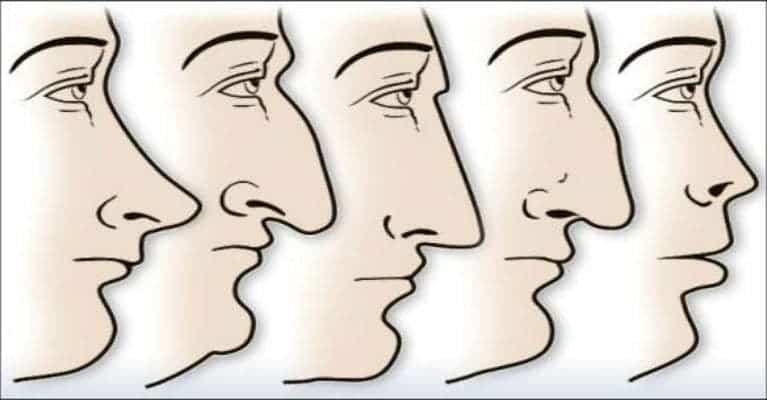The first human genome was sequenced to world acclaim in 2001, but unraveling the role and relationships between thousands of genes is a tedious task. Little by little, we’re learning how genes influence our development, behaviour and evolution. We now know which genes are responsible for blue eyes, red hair and now, thanks to the efforts of a team at University College London, those which code nose shape.
There are at least 14 different nose shapes, like the Roman nose (Tom Cruise), the aquiline nose (Daniel Radcliff who played Harry Potter), the Greek nose (Jenifer Anniston) or the celestial nose. The prevalence of these shapes is directly linked with heritage, since the nose shape is influenced by the environment. The nose is responsible for regulating temperature and humidity from the air, so there will be sensible differences between populations in equatorial Africa and Siberia’s frozen steps, for instance.
It took five years for the researchers to examine the facial photographs of 6,000 people from Latin America. For each person, measurements were made for the width of the nose (in the middle and at the bottom where it starts widening) and the inclination between the two nostrils. Also, participants had their DNA sequenced. In this particle sample, 50 percent were of European descent, 45 percent Native American and 5 percent African.
Five genes were found to be associated with nose shape, but also other facial features. Specifically, DCHS2, RUNX2, GLI3 and PAX1 influence width and pointiness of the nose, and EDAR affects chin protrusion.
“Few studies have looked at how normal facial features develop and those that have only looked at European populations, which show less diversity than the group we studied. What we’ve found are specific genes which influence the shape and size of individual features, which hasn’t been seen before.
“Finding out the role each gene plays helps us to piece together the evolutionary path from Neanderthal to modern humans. It brings us closer to understanding how genes influence the way we look, which is important for forensics applications,” said the first author of the report, Dr Kaustubh Adhikari, UCL Cell & Developmental Biology.
The findings will help explain how various environmental factors influenced the adaptability and evolution of homo sapiens populations. But, of course, there are some other more excentric applications. If you have a really solid understanding of how genes code human physionomy, forensic specialists might one day accurately reconstruct the face of a criminal starting only from a strand of hair or some other DNA material. Previously, we reported how Craig Venter, one of the most daring biologists of the 21st century, predicted with striking accuracy how your face looks or voice sounds like based on DNA alone.










